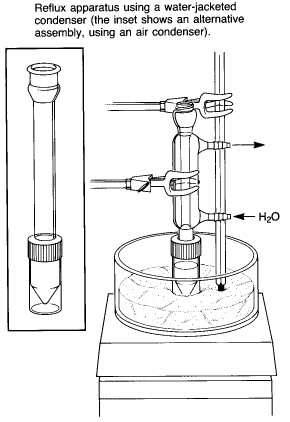
Note that the apparatus is clamped at the condenser rather than at the flask, as one would do for a macroscale experiment using conventional ground-glass joint glassware. The apparatus can be clamped in this way because of the screw-cap connection between the condenser and reaction vial, which prevents the connection from falling apart.
Heating is provided by a sandbath atop a magnetic stirrer/heater. A thermometer should be clamped in contact with the sand so as to allow monitoring of the bath temperature. The bath contains slightly more than 1 cm of sand - it is important to have enough to ensure good thermal contact with the reaction vial, but not so much that it is difficult to see the contents.